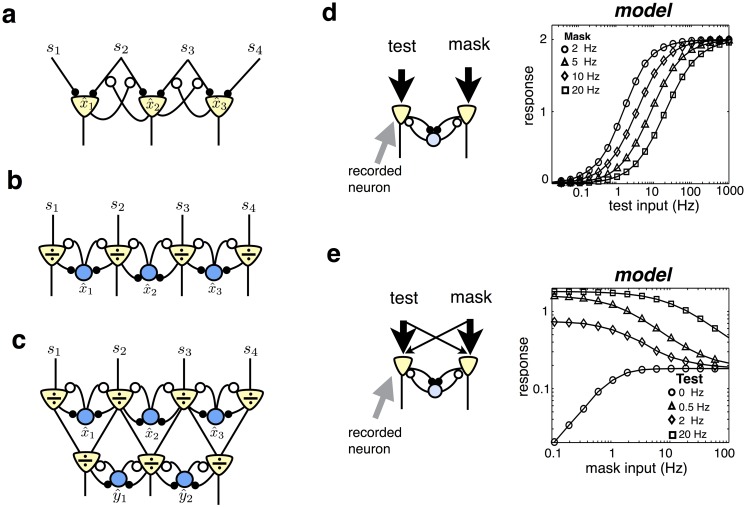Fig 6. Proposed neural implementation.
(a) Example network in which each stimulus feature is encoded by an excitatory neuron that projects to higher level areas. Divisive inhibition acts on individual synaptic inputs. (b) Example network with two neural populations: excitatory neurons encode the ratio between the received and predicted input, , while inhibitory neurons encode estimated stimulus features, . (c) Example of a hierarchical network. The fractional prediction error encoded in a given layer is integrated by downstream neurons, which encode more complex stimulus features. (d) Divisive gain control. (left) A ‘test’ stimulus activates the input to the recorded neuron (indicated with arrow), while a mask stimulus activates the input to the other neuron. Response of recorded neuron is plotted versus amplitude of the test stimulus. Each plot corresponds to a different amplitude mask (see legend).

